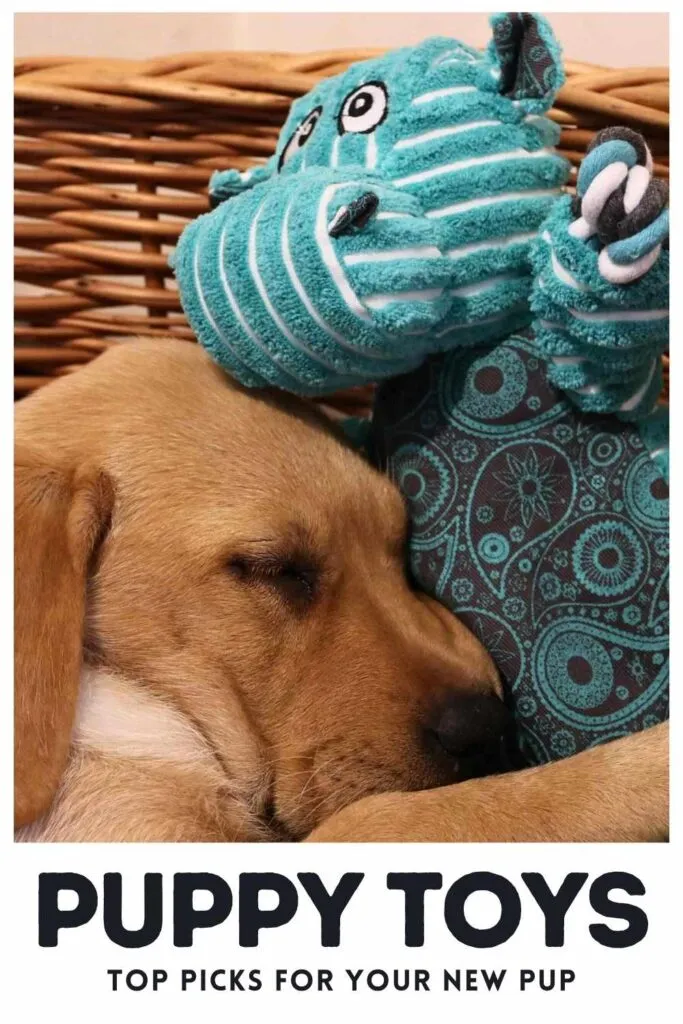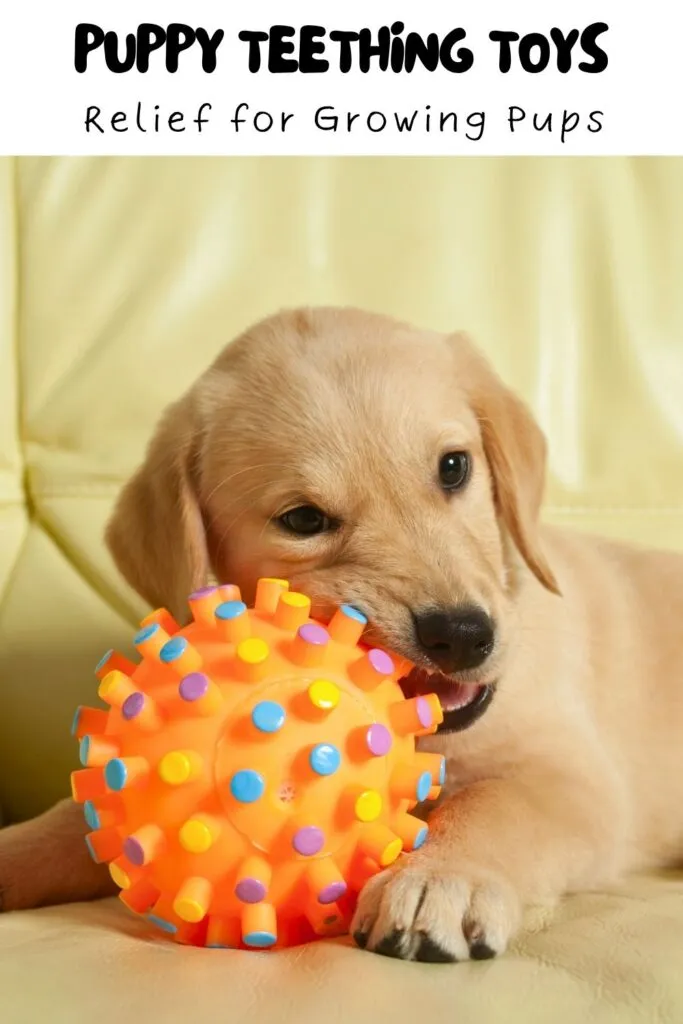Bringing a Lab puppy into your home is an exciting time, filled with boundless energy and an insatiable urge to explore the world through their mouth. For Labrador puppies, finding the right Good Chew Toys For Lab Puppies is crucial. These toys aren’t just for fun; they’re essential for their development, helping to soothe teething discomfort, stimulate their minds, and redirect their chewing instincts away from your furniture and belongings. As a seasoned dog owner and editor at Dog Care Story, I’ve learned firsthand that Lab puppies are particularly hard on their toys, requiring options that are not only engaging but also incredibly durable.
This guide focuses on providing you with practical, experience-backed recommendations for chew toys that stand up to the vigorous chewing of a Lab puppy. We’ll delve into why different textures are important and what makes a toy truly last, steering clear of generic lists and instead offering insights from real-life puppy interactions.
The Importance of Variety in Chew Toys
Labrador puppies, like all puppies, benefit immensely from a variety of textures and types of chew toys. This variety caters to their natural chewing instincts, which can range from the desire for a soft, comforting chew to the need for something firm and robust. Offering a diverse selection helps keep them mentally stimulated and prevents boredom, a common cause of destructive chewing.
Soft Toys for Comfort and Early Teething
While they might not last as long as their tougher counterparts, soft toys play a vital role in a puppy’s early development. They provide comfort, a sense of security, and are often the first toys a new puppy bonds with. For Lab puppies, toys from the Kong Wild Knots range are a great starting point. These toys are designed with minimal stuffing and feature knotted ropes inside, offering a satisfying chewing experience without the immediate mess of traditional plush toys.
The Kong Wild Knots Tiger, for instance, provides a great chewing sensation that can help redirect a puppy’s attention from your hands or household items. While no soft toy is completely indestructible, investing in higher-quality brands like Kong can extend their lifespan. It’s important to be realistic; most soft toys won’t survive beyond six months, but they are excellent for initial comfort and playful interaction.
 photo of a sleeping yellow Labrador puppy in a basket with a kong hippo toy
photo of a sleeping yellow Labrador puppy in a basket with a kong hippo toy
The KONG Wild Knots Bears are another excellent option within this range. They are designed to be tougher than typical plush toys, with knotted ropes inside for added durability and chewing satisfaction. For a Lab puppy, the larger sizes are recommended. These toys can be particularly comforting for puppies during nap times and can help ease the transition into a new environment.
Durable Chew Toys Built to Last
When it comes to Lab puppies, durability is key. Their strong jaws and persistent chewing habits can quickly turn flimsy toys into shredded remnants. This is where toys specifically designed for chew toys for aggressive puppy chewers shine.
The Power of Rubber Toys
Toys made from durable rubber, such as those from the KONG brand, are often the workhorses of a puppy’s toy collection. These are the toys that can withstand serious chewing and provide long-lasting entertainment. While puppies might show less initial interest in hard rubber toys compared to soft ones, their appeal can be significantly boosted by engaging the puppy directly or by filling them with treats.
The original KONG toy is a classic for a reason. It can be filled with soft food or treats and frozen, creating a challenge that can keep a puppy occupied for extended periods, especially when they are crated or left alone for short durations. For Lab puppies, the full-size adult KONG is often suitable from an early age, or you can opt for a puppy-specific version. For those with particularly strong chewers, the black KONG, designed for extreme chewers, is an option to consider. These are excellent examples of best chew toys for large puppies.
Another excellent option is the KONG Wubba. This toy features a tough canvas-like material with trailing legs and a squeaky rubber ball inside. The KONG Wubba comes in puppy sizes, which are perfect for Lab puppies. While the canvas exterior can eventually be destroyed by persistent chewing, the core rubber ball offers continued play value. However, it’s important to supervise your puppy with this toy, as the inner ball is not indestructible, and once the outer material is compromised, the toy should be removed to prevent ingestion of plastic parts.
Natural Chew Options and Their Considerations
Beyond manufactured toys, natural chew items can also be a valuable addition to your Lab puppy’s chewing repertoire. These often provide unique textures and appeal to a dog’s instinctual desire to gnaw.
Wood Chews and the Need for Safety
Some puppies have a strong inclination to chew on wood, and it can be frustrating when they target furniture or wooden fixtures. For these puppies, specialized wooden chews, such as tree root chews, can be a safer alternative. These are made from tough, splinter-resistant wood that offers a satisfyingly hard chewing experience. They are not cheap but can be very durable and provide hours of engagement.
 photo of a yellow lab puppy chewing on an orange teething toy
photo of a yellow lab puppy chewing on an orange teething toy
However, it’s crucial to be aware of the risks associated with very hard chew toys. While they satisfy a strong chewing need, they can also contribute to tooth fractures. Studies have shown that dogs can break teeth on hard objects, leading to pain and expensive veterinary treatment. Vets often recommend the “thumbnail test” – if you can’t make a dent in the toy with your thumbnail, it’s generally considered too hard. While some owners, myself included, have reintroduced harder chews like antlers to their dogs after careful consideration, it’s essential to weigh the risks and benefits. Always supervise your puppy with any new chew item, and if you notice any signs of excessive wear on their teeth or the toy itself, discontinue use.
Making the Most of Your Puppy’s Chew Toys
To maximize the lifespan and engagement of your puppy’s chew toys, consider these strategies:
- Introduce Toys Early: Puppies are less likely to destroy toys they’ve had since they were very young. Introducing a variety of toys early on can help them develop a healthy relationship with chewing.
- Mend and Repair: For soft toys, promptly mending small tears can extend their life significantly, preventing puppies from discovering the stuffing inside.
- Rotate Toys: Similar to how we rotate toys for children, rotating your puppy’s chew toys can keep them novel and exciting. This prevents them from becoming bored with a single toy and focusing all their destructive energy on it.
- Supervise Play: Always supervise your puppy, especially with new toys or when they are using toys that could potentially be a choking hazard or cause damage if destroyed.
Conclusion: The Right Chew for Your Lab Puppy
Choosing good chew toys for lab puppies is an ongoing process that requires observation and adaptation. While soft toys offer comfort and initial engagement, durable rubber toys and carefully selected natural chews are essential for satisfying their powerful chewing instincts. By providing a variety of textures and textures, and by supervising their play, you can ensure your Lab puppy stays happy, healthy, and constructively occupied, protecting your belongings in the process. Remember to always prioritize safety and consult with your veterinarian if you have any concerns about your puppy’s chewing habits or the suitability of specific toys.
References
- Avb.vfu.cz. (n.d.). dental problems in dogs. Retrieved from https://actavet.vfu.cz/media/pdf/avb_2000069020115.pdf
- Avb.vfu.cz. (n.d.). Tooth fractures in dogs. Retrieved from https://actavet.vfu.cz/media/pdf/avb_2001070020203.pdf
- Wiley Online Library. (n.d.). The effect of bone chewing on dental calculus in beagles. Retrieved from https://onlinelibrary.wiley.com/doi/10.1111/avj.12394
